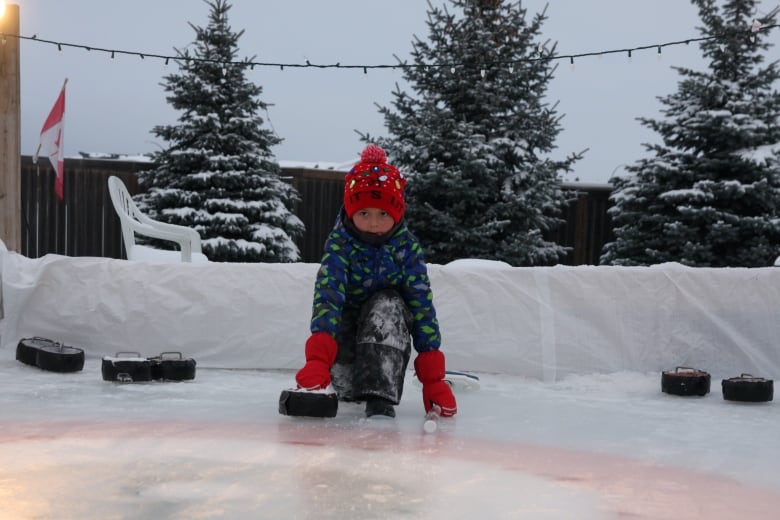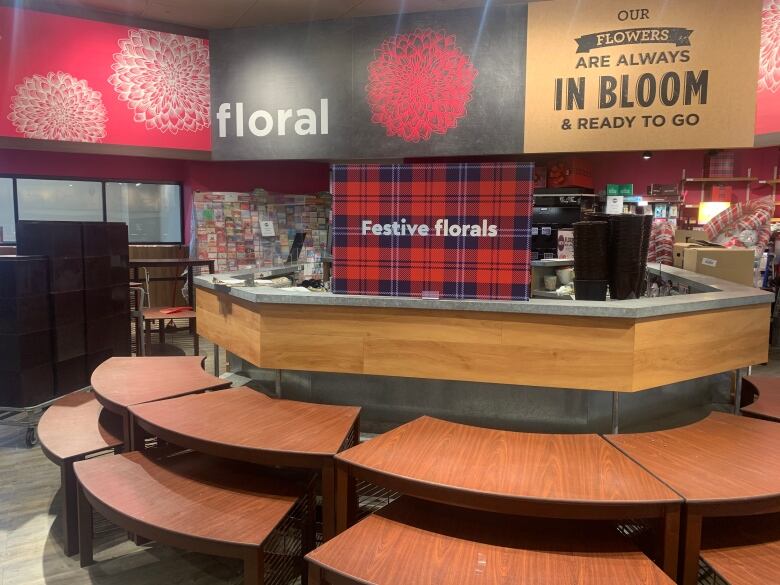It was supposed to last between two and four weeks — an emergency circuit-breaker, they called it, to disrupt the surging current of COVID-19 cases.
Now, 10 weeks later, Manitobans are just beginning to see a sliver of light through the code red rampart — the strictest lockdown of the nearly year-long pandemic.

That's more than two months of spiraling anxiety, failed businesses, job losses, postponed surgeries, and deaths of loved ones whose families could not be at their side due to some of the most stringent restrictions in the country.
It was also two months of rules that often left people confused and resulted in sometimes absurd applications at stores, with questionable distinctions between essential and non-essential items.
Newspapers weren't deemed essential at first, nor were Christmas-themed goods, even though holiday season planning was in full swing.
Air fresheners for houses were OK, but not for cars.


But there was also another side: the emergence of creativity and ingenuity.
With travel not recommended, and prohibitions on spending time with friends inside their homes or favourite restaurants, Manitobans instead embraced the outdoors and made the best of the situation.
Large holiday dinners were replaced with meals delivered to family members, or virtual gatherings.
Skating trails, mazes, homemade hockey rinks, curling sheets, and even ice-climbing walls showed up in backyards and along frozen rivers and retention ponds.
WATCH | Hazel Borys gives a tour of her maze on the Assiniboine River:
The desire to get out, in the absence of getting away, led to soaring sales of gear such as cross-country skis, skates and even snowshoes.
Manitobans have adapted, says a clinical psychologist with Shared Health and assistant professor at the University of Manitoba.
"I think the first thing to realize and to think about in this pandemic, or following this pandemic — resilience will be the norm and not the exception," Dr. Renée El-Gabalawy said.
In some cases, people even found things to be positive about.


El-Gabalawy led a research group, right before the holidays, looking at how people responded emotionally to COVID-19. Many acknowledged a renewed value on time spent with family and friends, and their own well-being.
"People talked about realizing what really matters to them [and] having a pretty significant perspective shift because of these dramatic changes that have taken place," she said.
That's not to say people weren't stressed. There's no question they were, she added.


"There were higher rates of isolation — people are disconnected from their families and many found this particularly hard over the holidays," El-Gabalawy said.
"There were a number of businesses that were, and continue to be, compromised. So people are suffering financially."
That was aggravated by the multiple extensions to the health orders, as people hoped for an end, only to have it pushed further off.
"That can most definitely exacerbate both stress and anxiety and the depressive features as well," El-Gabalawy said.
"I think that that the way people coped over the last couple of months, and the things they did while they were within code red, will largely relate to where their mental health is at right now."
Retail restrictions
Winnipeg went to the red, or critical, level of the province's pandemic response system on Nov. 2, followed by the rest of the province on Nov. 12, as officials struggled to control a rising tide of cases.
All non-essential businesses closed and virtually all social gatherings in homes were banned. Movie theatres, concert halls, sports facilities, restaurant dining rooms and places of worship were ordered closed.

But shortcomings in the rules were immediately obvious.
Businesses that carried essential items were allowed to open, which enabled them to also sell non-essential goods.
Amendments had to be made. And made again. And again — as the essential versus non-essential list was refined and the definitions modified.


Cosmetics were initially on the no-no list, prompting criticism.
"You just have these sweeping generalizations [in policy]. The government has to be reminded that, you know, white males are not the default position for many of the people living in this province," Lara Rae, a transgender woman, told CBC News.
Cosmetics are crucial to the mental health of people experiencing certain forms of anxiety or living with some medical conditions, she said, noting that it helps transgender people express who they are.
Eventually, to protect smaller businesses that were not allowed to be open, the government ordered large retailers to stop selling non-essential goods in-store, forcing them to find creative ways to cordon off products.

Stores were allowed to offer non-essential items for curbside pickup or delivery, but that exposed an economic disparity, as many people don't have credit cards or access to computers for online shopping.
Manitobans saw it coming
For many, however, code red hasn't been as distressing as the initial lockdown last spring, when COVID-19 first arrived in Manitoba.
The public health orders in March forced a sudden shift in our in our day-to-day lives.
But code red was something we could see coming.
"We had been dealing with this for months on end, so there was a bit of habituation," El-Gabalawy said.
"Going to code red …may have not felt as significant as some of the changes that had happened earlier in the pandemic."

Daily caseloads and deaths steadily climbed after summer. By the end of September, Winnipeg and the surrounding area moved to the orange level on the province's pandemic response system.
Within a month, people were calling for the province to impose code red to deal with the growing cases.
Snow couches
Although officials urged Manitobans to entirely avoid interacting with people outside of their household, that wasn't mandated.
Outdoor gatherings of up to five people, with proper distancing, have been allowed throughout the partial lockdown.

So Winnipeggers took the indoors outside. Snow-sculpted sofas, with blankets and magazines, emerged on the Assiniboine River near the Hugo docks.
Friends Cassidy Hes-Jobin, Maddie Alsip, and Elissa Hall, who went tobogganing in East Kildonan, say the ability to see each other — even in limited ways — has been a blessing.
"When I heard Manitoba was heading back into code red, I honestly went into a fight-or-flight mode. I was terrified to be stuck at home again because of the effects it had on my mental health last spring," Hes-Jobin said.

"Thankfully, my friends and I were able to maintain regular FaceTime calls and even see each other outside."
Doing something as small going sledding with friends "can make my whole week," Alsip said.
"I'm really thankful that we were able to continue meeting outdoors, to still gain that social interaction," added Hall. "It has definitely helped make it easier to cope with the way the world is right now."
Updated orders
Though hard on mental health and the economy, the restrictions likely saved an estimated 1,700 lives, Dr. Brent Roussin, Manitoba's chief public health officer, said at a news conference one week before the orders were slightly relaxed.
"We've lost many Manitobans and our hearts go out to those families. But we can see from our restrictions we've saved many more," Roussin said on Jan. 15.
Manitoba remains at the red, or critical, level, but as of 12:01 a.m. Saturday, some of the restrictions were loosened.
With the exception of those in the north — where case numbers continue to be problematic — Manitobans are now allowed to have two designated individuals over for a visit, and up to five visitors in their yards.
As well, the essential items list has been jettisoned. That means all retailers can open and sell their full range of products, with strict occupancy and distancing limits under the new orders, which will be in place for at least three weeks. Barber shops and hair stylists may also reopen with the same rules.

The news is good for small businesses, but there's little celebration, said Jonathan Alward, Prairie director for the Canadian Federation of Independent Business.
"When might restaurants see dining services return? When are gyms going to be able to reopen? When are recreation facilities, when are concert venues, when are a lot of businesses related to tourism going to get back to any semblance of normal?" he said.
"Those businesses are having an extremely challenging time right now. I think a lot of them are starting to lose hope and that's very concerning, because they have to make long-term decisions on whether … they're going to keep pushing through it."

Even for the retailers who can open, there's little likelihood revenues will rebound to normal levels, as consumers will take time to feel comfortable going out again, Alward said.
"It doesn't mean that a lot of the economic challenges are behind us. It's probably going to be far from that."
https://news.google.com/__i/rss/rd/articles/CBMiVGh0dHBzOi8vd3d3LmNiYy5jYS9uZXdzL2NhbmFkYS9tYW5pdG9iYS9sb2NrZG93bi1jb3ZpZDE5LW1hbml0b2JhLWNvZGUtcmVkLTEuNTg4MDY4NNIBIGh0dHBzOi8vd3d3LmNiYy5jYS9hbXAvMS41ODgwNjg0?oc=5
2021-01-23 12:00:00Z
52781322246815
Tidak ada komentar:
Posting Komentar